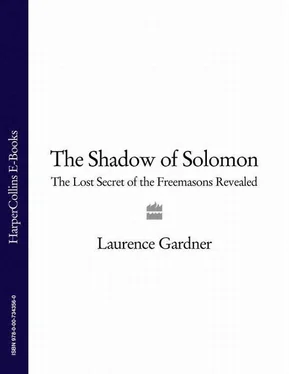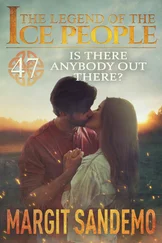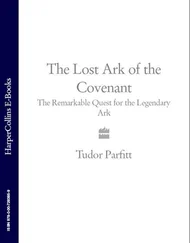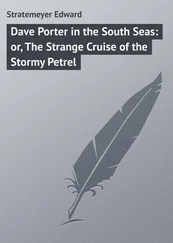This completes an overview of the first 100 years of the new-style English Freemasonry as it evolved during the Georgian era. There is little mention in the records of those symbolic or charitable ideas that were seemingly in the minds of the original tavern-club members of the early 1700s. Apart from internal wrangling and disputes between different factions, the century was mainly concerned with the establishment of power bases and grand titles. There are references, here and there, of an evolving lodge ritual, which was added to at various stages—the first mention of the Temple pillars Jachin and Boaz, for example, occurring in 1762. 30Not until the 1800s did anything that might be recognized by today’s masons begin to take shape. The basic ceremonial format was settled in around 1816, while the philosophical and moral concepts were very much a product of the latter Victorian era. Despite the fact that the newly initiated Entered Apprentice Freemason believes himself to be in a privileged realm of ancient mysteries, there is actually not that much in modern ritual that can claim to be especially ancient, except in theory. This is not a criticism of current masonic practice, it is simply a recognition that the historical provenance of certain aspects is not always correct in the way it is conveyed.
6 Imperial Conquest
The Celtic Realms
Although there was a Grand Master for Wales by the middle 1700s, there was no formally constituted Grand Lodge as such. In Ireland and Scotland, however, Grand Lodges were established as separate institutions to the Grand Lodge of England, and they remain independent today. The Grand Lodge of Ireland was founded in 1725, and the Grand Lodge of Antient, Free and Accepted Masons of Scotland in 1736.
Documentary evidence of Freemasonry in Ireland dates back to the 1600s, and the present headquarters is in Dublin. The journal Dublin Weekly of 26 June 1725 relates that two days earlier Richard, Earl of Rosse, was installed as Grand Master of Ireland, and the story of privately-run Irish lodges immediately prior to this is worth noting. 1
Unlike in the English system, women were not necessarily precluded from becoming masons in Ireland. A well-documented lady Freemason of the era was the Hon Elizabeth St Leger (b. 1693), sister of the 4th Viscount of Doneraile, County Cork. 2Initiated in about 1715, Elizabeth’s later portrait depicts her in a masonic attitude and wearing her apron. 3Following the Earl of Rosse, the Irish Grand Master from 1731 was James, Lord Kingston. His father had been a Jacobite exile with King James and, on returning to Ireland in 1693, he was charged with recruiting for the Stuart cause. The same happened with Grand Master James in 1722.
The first extant reference to Freemasonry in Ireland comes from a student graduation speech delivered at Trinity College, Dublin, in 1688. It was stated that a new college was to be established with a society of Freemasons. 4The penal laws William of Orange ( Billy Windmills to his Irish subjects) drew up against the people of Ireland, Protestants and Catholics alike, were extremely harsh, particularly his ruinous 1699 prohibition of Irish wool exports to England. Many have wondered why the Protestants of Ireland were shamefully treated by the monarch they had served so well at the Battle of the Boyne—especially when his wife, Queen Mary, was a convinced Protestant—but the answer is straightforward. The trade sanction was imposed in 1699, but Mary had died in 1694, leaving William as the sole ruler. His interests were not with Britain or Ireland, and they were certainly not with the Protestants. His mission throughout was to maximize Holland’s trading position against that of France. In Scotland, where the masonic tradition dates back to much earlier times, King William was equally ruthless, even though Scotland was a Protestant nation with a National Kirk. In fact, the Scots had been subjected to a blanket excommunication in the days of Robert the Bruce for standing against the Catholic King Edward of England. In this light it is surprising that for all his blatantly anti-Protestant behaviour, William III is still considered by so many to have been a champion of the Protestant cause.
When King James was deposed in December 1688, the Scots in general were most displeased at the loss of their dynastic monarchy, and in the very next year came the first Jacobite Rising. On 27 July 1689, Viscount Graham of Claverhouse (known as Bonnie Dundee), led a force of Highlanders against King William’s troops at Killiecrankie, near Perth. The Scots’ charge was successful, but Dundee was mortally wounded and died without knowing he had been appointed King’s General. A few weeks later the Highlanders were less fortunate when defeated at Dunkeld. A particularly intriguing fact, however, comes from the Benedictine abbot Dom Augustin Calmet (1672-1757). He recorded that when Viscount Dundee fell at Killiecrankie he was wearing the Grand Prior’s cross and sash of the Knights Templars—a pre-masonic Order which, according to a majority of modern reference sources, ceased to exist in 1307. 5
Early in his reign, King William instructed that all Highland Chiefs should swear an oath of allegiance to him, but the majority were reluctant to comply. Their kings had always sworn fealty to the nation, rather than the reverse. In order to force the issue, Sir John Dalrymple, Secretary of State for Scotland, was empowered to persecute one reluctant clan as an example to the others. He chose the Macdonalds of Glencoe, who had failed to meet the deadline of 1 January 1692. The ageing MacDonald chief, MacIain, had actually tried to swear his oath at Fort William on 30 December, but no Crown officer was present, and as a result he did not manage to comply until 6 January—almost a week late.
Unlike some other clans, the Macdonalds had no military strength and so were easy prey. Their settlement nestled between the towering mountains of Glencoe, which constituted more of a geographical trap than a natural fortress. On 1 February, Dalrymple sent two companies of Argyll’s Regiment, under Robert Campbell of Glenlyon, to exterminate the unsuspecting clan. Arriving in the guise of a peaceful mission, the soldiers took lodging with the hospitable families for many days. Then, on the bitter morning of 13 February, they cut down every Macdonald they could find, sparing neither the women, the elderly, nor the young. Not surprisingly, the dreadful Glencoe Massacre had the opposite effect to that intended. Instead of intimidating the clans into supporting the new regime, it caused them to form a strong Jacobite confederacy against the ruthless Dutchman and his Government. (In the next chapter the long-standing history of Templarism and Freemasonry in Scotland is investigated.)
The masonic Grand Lodge of Scotland was founded some years after those of England and Ireland. The reason for this might have been the much wider scope of Scottish Freemasonry, which had many more independent lodges from which to obtain agreement. Of the 100 lodges invited to the foundation meeting, representatives from only 33 attended. The other two-thirds did not see the point of a central regulatory body. By virtue of this, the Edinburgh-based Grand Lodge could not exert its authority in the same way as the London group and so the lodges were permitted to retain their own procedures, regalia and ritual. Subsequently, as new lodges were formed after 1736, it was necessary to afford them the same privilege. 6The situation remains the same today and, although lodges in Scotland are chartered by Grand Lodge, they retain their individual modes of operation, and there is no rigidly standard ritual.
The Grand Lodge of Scotland is keen to assert that theirs is the only nation capable of proving a direct documented connection between operative stonemasonry and speculative Freemasonry. Certainly, Scotland holds the oldest masonic records in the world and even in today’s lodge workings a stonemason’s maul is used by the Master and Wardens.
Читать дальше












